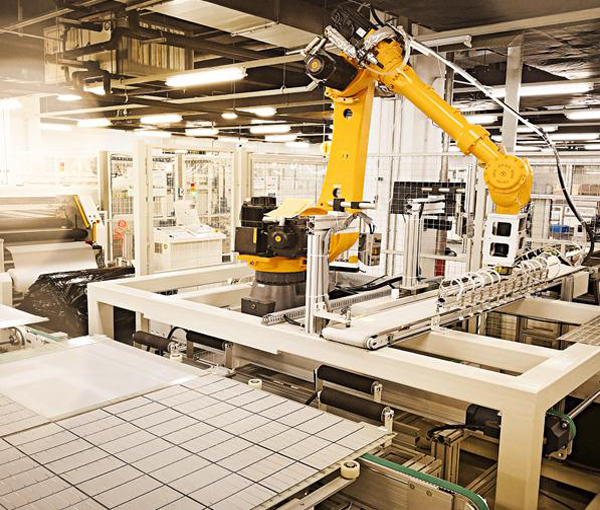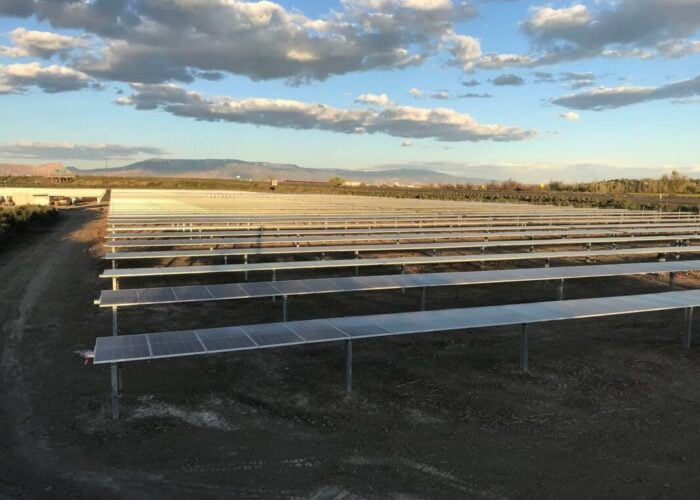
Canadian Solar has tweaked its planned capacity expansions for this year, stripping back module assembly capacity expansion to instead produce more solar wafers and cells as the industry continues to recalibrate following months of supply chain volatility.
Earlier today, Canadian Solar reported its Q2 2021 performance, noting record quarterly revenue of US$1.43 billion as module shipments reached the top end of its guidance. It was enough to see CSI Solar, the company’s solar manufacturing arm, swing back into the green after reporting a quarterly loss in Q1. Our analysis at the time documented the “challenging” environment caused by spiralling material and logistics costs, prompting the business to pursue profits and margins over shipment volumes.
Try Premium for just $1
- Full premium access for the first month at only $1
- Converts to an annual rate after 30 days unless cancelled
- Cancel anytime during the trial period
Premium Benefits
- Expert industry analysis and interviews
- Digital access to PV Tech Power journal
- Exclusive event discounts
Or get the full Premium subscription right away
Or continue reading this article for free
As it transpires, CSI Solar was able to at least partly deliver on both in the second quarter, reaching the top end of module shipment guidance while boosting the division’s quarterly gross margin from 9.7% in Q1 to 13.1%.
But this isn’t to say that darker clouds are not on the horizon, with pricing volatility – especially surrounding freight and logistics – expected to last long into 2022, if not beyond. CSI Solar has actually reduced its module shipment guidance by 2 – 3GW for the full year, expecting to ship between 16 – 17GW of modules in 2021 instead of the 18 – 20GW initially forecast.
This comes despite module demand expected to remain strong and indeed grow in the second half, Yan Zhuang, president of CSI Solar, told analysts earlier today. Zhuang added that throughout H2, and in particular during Q4, it’s expected that there will be a “very tight balance between ASPs [average selling price] and supply chain costs”, indicating the company wanted to maintain the right balance between the two, optimising its margins and exerting more control over its sales process.
Shawn Qu, chief executive at Canadian Solar, meanwhile provided more colour on the roughly 2GW reduction in module shipment guidance, indicating that around one-third of the 2GW reduction was down to that cost balancing exercise, with the other two-thirds attributed to customers pushing projects back into 2022 and logistics issues further down the chain delaying deliveries.
This could go also go someway to explain why the manufacturer has tweaked its manufacturing capacity expansion plan for this year, upgrading its expected wafer and cell capacities while trimming its module assembly plans back somewhat.
The table below details figures provided at the firm’s Q1 2021 results disclosure in May, showing the company’s capacities at the end of 2020 and its expected capacities at both H1 2021 and FY 2021.
| FY 2020 | H1 2021 | FY 2021 | |
|---|---|---|---|
| Ingot | 2.1GW | 5.1GW | 5.1GW |
| Wafer | 6.3GW | 10.3GW | 10.3GW |
| Cell | 9.6GW | 12.9GW | 13.3GW |
| Module | 16.1GW | 22.2GW | 25.7GW |
The table below is the updated figures provided during the company’s Q2/H1 2021 results disclosure today, showing the amendments to its plan and capacities as of 30 June 2021.
| FY 2020 | H1 2021 | FY 2021 | |
|---|---|---|---|
| Ingot | 2.1GW | 5.1GW | 5.1GW |
| Wafer | 6.3GW | 8.7GW | 10.3GW |
| Cell | 9.6GW | 13.3GW | 13.9GW |
| Module | 16.1GW | 19.7GW | 22.7GW |
Firstly, it’s worth noting that CSI Solar’s wafering capacity as of 30 June 2021, at 8.7GW, is someway short of the 10.3GW capacity it expected to have at this stage of the year when delivering its Q1 2021 results in May, perhaps indicating the extent to which the soaring price of polysilicon has impacted on CSI Solar’s more immediate plans. Expected module assembly capacity has also shrunk by some 500MW, while cell production capacity is up 400MW on expectations.
The year end forecasts are more different. CSI Solar has reduced its expected module assembly capacity by 3GW, while increasing wafering and cell production capacity by 1.2GW of wafers and 600MW respectively. One of the clear conclusions to take from the tweaks to planned capacities is that it aligns both with Canadian Solar’s strategy of placing margin and profit over module shipments, but also in bringing more of its wafer and cell sourcing in-house, reducing its exposure to pricing volatility elsewhere.
Responding to questions around the adjusted plans today Zhuang said that while the company was continuing to execute on its existing capex plan, it also believed in approaching the issue with flexibility. HE added that CSI also believed that a strong oversupply on some materials would begin to occur from next year, at which point prices could be more advantageous.
Nevertheless, Zhuang said that capacity expansion adjustments would not have any impact on CSI’s intent to grow its market share. Zhuang said the company maintained an 8% market share last year and the intent is to see that grow to between 10 – 12% this year. Tweaks to capacity expansion projections are therefore a case of expanding on a more cautious footing.






